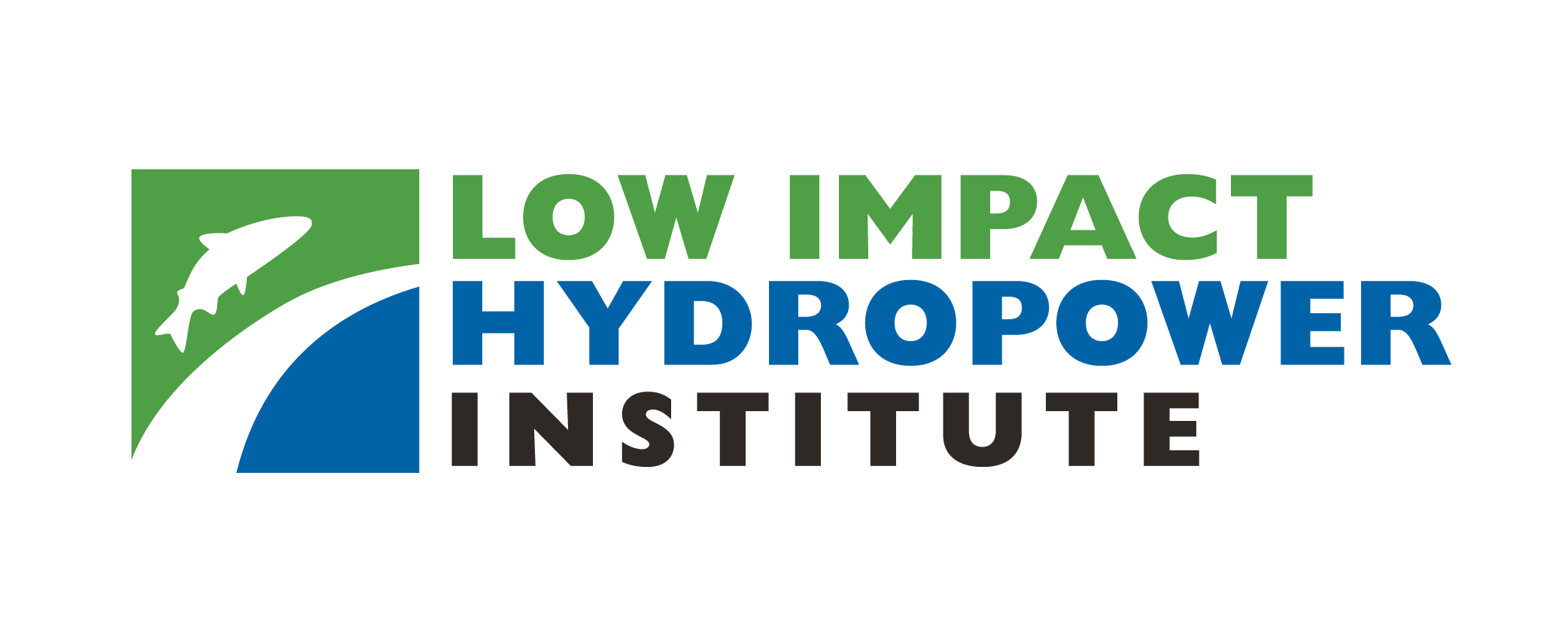LIHI 證書 #200 - 俄勒岡州門羅空投項目

| 項目名稱 | 夢露掉落 |
| 理海證書編號 |
200 |
| LIHI 證書期限 |
2023 年 2 月 9 日 – 2033 年 2 月 8 日 |
| 擁有者 | 現在能源系統 |
| 狀態 | 俄勒岡州 |
| 地點 | 北部灌溉區主要單位 運河 |
| 裝置容量 | 0.3 兆瓦 |
| 平均年發電量 | 1,078 兆瓦時 |
| 設施類型 | 連續 運河 (僅當管道內有足夠的流量時才運行) |
| 聯邦能源監管委員會 不。 | P-14430。導管 豁免 2014 年 8 月 1 日發布 |
Monroe Drop 專案位於 Deschutes 流域 位於俄勒岡州傑斐遜縣卡爾弗鎮附近的美國墾務局 (USBR) 北部灌溉區主運河 (NUMC)。 NUMC 和 Monroe Drop 結構是由北部灌溉區 (NUID) 運營的灌溉設施,主要用於向傑斐遜縣近 50,000 英畝農田輸送灌溉用水。北部灌溉工程於 1938 年開始修建,並於 1949 年竣工。
該灌溉計畫的水源來自德舒特河和克魯克德河。水從 Wickiup 流出 水庫 流入德舒特斯河,而克魯克德河的水則流向抽水站,然後轉移到俄勒岡州本德市的 NUMC。從那裡,水通過北部灌溉區的 65 英里主渠和 235 英里支渠到達使用者。
主運河的門羅落差結構由一個 35 英尺長、15 英尺高的混凝土開放式灌溉落差組成,其上游和下游都有混凝土翼形過渡段。根據流量大小,該結構處的水位在 13.5 英尺到 16.5 英尺之間。落差結構內有一個自動閘門,用於控制流經主運河的灌溉水的正常流量。
該水力發電設施於 2015 年建成,包括一個 12 英尺寬、61.5 英尺長的混凝土進水渠,一個 63 英尺長、84 英寸直徑的 壓力水管,長 25 英尺,寬 44 英尺 發電站 包含一個渦輪機/發電機組,一個大約50英尺長的矩形截面 導流管 入口尺寸為 43 英寸寬、54 英寸高,從發電站延伸到運河底部,一條 2,200 英尺長的電線埋在運河服務道路下的管道中,與 PacifiCorp 擁有和運營的 12.5 kV 配電線路相連。
主運河上的 Obermeyer 閘門 溢洪道 控制 頭 在現場並在灌溉季節保持完全充氣。在清除運河雜草期間,閘門會降低,以允許所有運河碎片通過,而不會對設施造成堵塞。此閘門是運河操作系統的一部分,而不是水力發電計畫的一部分。
原來的 250 千瓦 SLH 渦輪機於 2020 年被 300 千瓦 Natel MSD190 魚類安全坑式修復水輪機 (RHT) 取代。其獨特的魚類安全葉片經過加厚處理並針對低頭應用進行了優化,無需使用細魚篩,從而降低了成本並提高了工廠效率。
該計畫採用「渠道徑流式」模式運行,僅在灌溉季節(四月至十月)利用流經落水結構的可用水來發電。在發電站緊急停電期間,通常會流經發電站的水流仍會留在運河中。 Obermeyer 閘門可自動調節,以保持落差結構上游的恆定高度,並維持其下游的流量,並且通常在灌溉季節保持完全充氣。專案運作不會影響輸送給灌溉用戶的水的時間或地點。灌溉季節過後,渠水就排乾了。
該運河系統不是自然河流系統,作為人造結構,不支持水生生物。俄勒岡綜合報告的線上地圖工具顯示,克魯克德河上游 導流 由於溫度、生物標準、磷和總溶解氣體,對魚類和水生生物造成損害。主運河改道處的德舒特斯河因水溫與 PH 值受損。由於該項目位於 Haystack 水庫上游 6 英里處,該段運河系統沿線有 5560 個不同高度的類似落差,因此該項目不太可能對溶解氧水平產生任何影響。由於專案進出水口距離較短且缺乏儲存,水溫也不太可能受到專案營運的影響。
計畫附近的德舒特河和克魯克德河並沒有任何洄游魚類物種。此外,運河從 11 月到 3 月或 4 月都會脫水,因此全年不存在魚類棲息地。主運河改道引水口 壩 位於德舒特斯河上,距離門羅瀑布上游 37 英里處,配備了垃圾架和魚柵,但不符合現行州標準。俄勒岡州魚類和野生動物部(ODFW)報告稱,在主運河引水口下游的脫水運河中發現了包括紅帶鱒魚、褐鱒魚和山白鮭在內的當地魚類被困;在位於該計畫運河下游 6 英里處的 Haystack 水庫中發現了鮭魚和紅鮭。在灌溉季節,任何從運河引水口順流而下的魚都可以透過該計畫繼續向下游移動,但如上所述,它們可能會在運河脫水期間被困在下游,或者如果到達 Haystack 水庫則無法產卵。 NUID 報告稱,他們與德舒特斯盆地控制委員會、德舒特斯河保護協會和志工合作,在秋季排水時從運河中拯救了魚類。然而,Natel 的 Restoration Hydro Turbine 已被證明能夠提供安全的 魚道 在實驗室和現場測試中。在納塔爾測試設施進行的測試中,銀相美洲鰻的存活率為 100%,即使在渦輪機全功率運轉時,傷害或影響也很小。自由瀑布計畫 (LIHI #178) 的現場測試發現,幼年鯡魚的 48 小時存活率為 100%。渦輪機設計是一項創新技術,部分原因在於葉片前緣的厚度,這種設計可以降低尖端速度並最大限度地減少撞擊機率和對魚類的傷害。
該項目本身不會對下游魚類通道或魚類保護產生不利影響。此外,專案業主無法採取任何合理的行動來影響 NUID 的行動或實施長期提議的 魚螢幕 但隨著新資金的湧入,篩檢很可能在未來幾年內完成。 NUID 已獲得撥款,用於更換主引水壩的魚類篩選裝置。
計畫用地包括克羅基德河國家草原和奧喬科國家森林管理的約 2 英畝聯邦土地(發電站佔地 0.89 英畝,輸電線佔地 1.2 英畝)。草原(由美國林務局管理)用於牧場、魚類和野生動物、娛樂、礦物開採和燃料木材,對計畫沒有直接影響。運河西邊的土地主要用於農業,東邊是克羅基德河國家草原。作為管道項目,項目運營不會對海岸線或流域產生影響。計畫區內不存在具有生態價值的土地,也沒有受威脅或瀕危物種的關鍵棲息地。與 ODFW 和 USFWS 協商後確定計畫區域內不存在受威脅或瀕危物種。
Monroe Drop 結構和運河是歷史遺產,有資格列入 國家歷史遺跡名錄。 2013 年,俄勒岡州歷史保護辦公室 (SHPO) 確定專案安裝將對符合條件的歷史財產產生不利影響。因此,專案所有者與 SHPO 合作以減輕這些影響。隨後進行的渦輪機更換被確定不會對歷史遺產造成影響。
該項目沒有娛樂資源或用途。出於安全考慮,NUID 禁止公眾進入主運河。然而,附近還有其他休閒資源,包括以釣魚、露營、划船和日間活動而聞名的 Haystack 水庫以及 Crooked River 國家草原。
合規狀態
目前證書中沒有針對設施的特定條件。
2025:未發現任何重大變更或合規問題。根據年度審查結果,該項目仍然合規。 NUID 在其網站上報告稱,他們獲得了補助金來更換 魚螢幕 關於轉移。
2024:未發現任何重大變更或合規問題。根據年度審查結果,該項目仍然合規。
2023:目前證書的年度報告尚未生效。
認證歷史
2023 年 6 月 8 日: 低影響水力發電研究所已就門羅水力發電計畫的認證做出了最終決定。認證期間為2023年2月9日,有效期10年,至2033年2月8日到期。
2023 年 5 月 8 日: 低影響水力發電研究所已初步批准對門羅水力發電計畫進行低影響認證。完整的申請和審核員報告如下。該決定是初步決定,需等待 30 天的上訴期。只有在 60 天的評論期內對初始申請發表評論的人才有資格提出上訴。此類上訴需要包括有關該項目為何不符合 LIHI 標準的解釋。申訴請求可以透過電子郵件發送至 評論@lowimpactHydro.org 主題行為“Monroe Drop Project”,或郵寄至 Low Impact Hydropower Institute,地址為 1167 Massachusetts Ave, Arlington, MA 02476。申請人將有機會回應,任何回應也將公佈。 請求必須在 2023 年 6 月 7 日東部時間下午 5 點前收到。 如果沒有收到上訴請求,認證期限將為 2023 年 2 月 9 日至 2033 年 2 月 8 日。
2023 年 4 月 10 日: 應利害關係人的要求,Monroe Drop 的評論期已延長一週。評論期將於 2023 年 4 月 17 日結束。
2023 年 2 月 9 日: 低影響水力發電研究所已收到了門羅水力發電計畫低影響認證的完整申請。 LIHI 正在就該申請徵求公眾意見。具體來說,我們想知道您是否認為該項目符合第二版手冊中修訂的 LIHI 低影響認證標準。請查看 LIHI 修訂版中的計劃和標準 手冊 然後審查下面的項目申請資料。與特定 LIHI 標準(流量、水質、魚通過等)直接相關的評論將是最有幫助的,但所有評論都會被考慮。意見可以透過電子郵件提交給研究所: 評論@lowimpactHydro.org 主題行為“Monroe Drop Project Comments”,或郵寄至 Low Impact Hydropower Institute,地址:1167 Massachusetts Avenue, Arlington, MA 02476。 評論必須在 2023 年 4 月 10 日東部時間下午 5 點或之前收到 予以考慮。所有評論都將發佈到網站上,申請人將有機會回應。任何回應也將被發布。
